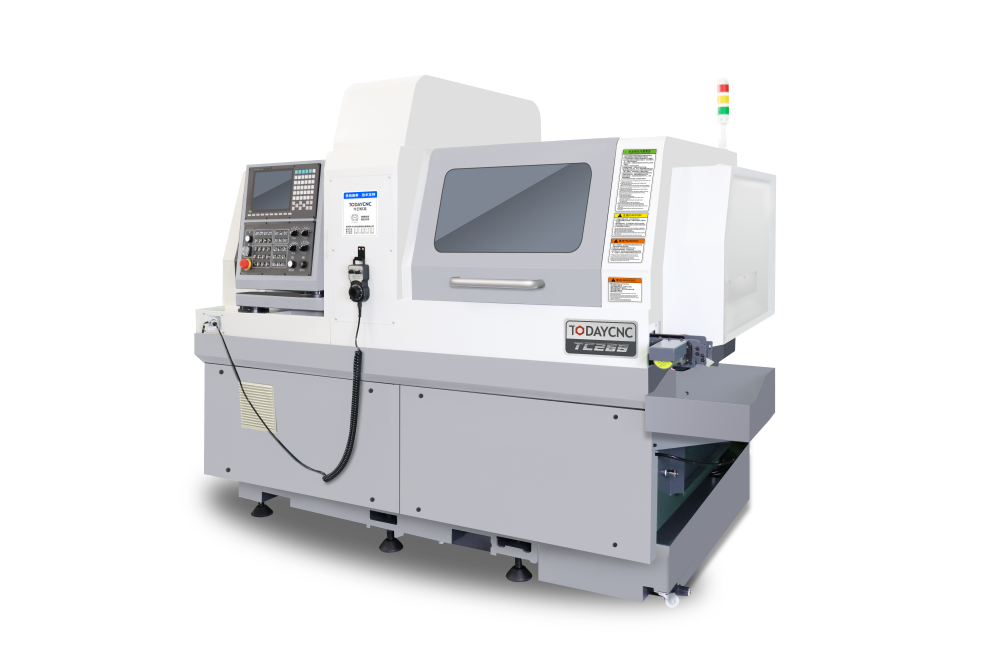Maximizing Efficiency with a Double Spindle Lathe: A Comprehensive Guide
Maximizing Efficiency with a Double Spindle Lathe: A Comprehensive Guide
Table of Contents
1. Introduction to Double Spindle Lathes
2. Benefits of Using a Double Spindle Lathe
2.1 Increased Production Rates
2.2 Enhanced Precision and Accuracy
2.3 Versatility in Operations
3. Key Features of Double Spindle Lathes
3.1 Dual Spindle Design
3.2 Advanced Control Systems
3.3 Tooling and Setup Flexibility
4. How to Choose the Right Double Spindle Lathe
4.1 Assessing Your Manufacturing Needs
4.2 Evaluating Machine Specifications
4.3 Considering Budget and ROI
5. Best Practices for Maximizing Efficiency
5.1 Regular Maintenance and Upkeep
5.2 Employee Training and Skill Development
5.3 Implementing Lean Manufacturing Principles
6. Real-World Applications of Double Spindle Lathes
6.1 Automotive Industry
6.2 Aerospace Sector
6.3 General Manufacturing
7. Common Challenges and Solutions
7.1 Overcoming Setup Times
7.2 Addressing Quality Control Issues
8. Future Trends in Double Spindle Lathe Technology
Frequently Asked Questions (FAQs)
1. What is a double spindle lathe?
2. How does a double spindle lathe improve production efficiency?
3. What types of materials can be machined using a double spindle lathe?
4. Are double spindle lathes suitable for small batch production?
5. How can I ensure optimal performance from my double spindle lathe?
1. Introduction to Double Spindle Lathes
In today's competitive manufacturing landscape, the push for greater efficiency and productivity has led to the adoption of more advanced machinery. Among these innovations, the **double spindle lathe** stands out as a game changer. This sophisticated machine allows manufacturers to streamline their operations by enabling simultaneous machining processes, thus significantly reducing cycle times and enhancing output.
2. Benefits of Using a Double Spindle Lathe
The advantages of implementing a double spindle lathe in your production line are multi-faceted. Below, we explore some of the primary benefits.
2.1 Increased Production Rates
A **double spindle lathe** can perform multiple operations at once by utilizing two spindles. This dual-action capability leads to higher production rates, allowing manufacturers to meet demand without compromising on quality. By capitalizing on this efficiency, businesses can enhance their competitive edge.
2.2 Enhanced Precision and Accuracy
Modern double spindle lathes are equipped with advanced control systems that enhance machining precision. With the ability to execute complex operations in a single set-up, these lathes minimize human error and ensure that the finished products meet exact specifications.
2.3 Versatility in Operations
Double spindle lathes are not just limited to one type of machining process. They can accommodate various operations such as turning, drilling, and milling, making them versatile tools in any workshop. This flexibility allows manufacturers to adapt to changing production needs swiftly.
3. Key Features of Double Spindle Lathes
Understanding the features that make double spindle lathes effective can help you make informed decisions when purchasing or upgrading your equipment.
3.1 Dual Spindle Design
The hallmark of **double spindle lathes** is their dual spindle configuration. Each spindle can operate independently, allowing for simultaneous machining processes that drastically reduce production time.
3.2 Advanced Control Systems
Today's double spindle lathes come equipped with sophisticated CNC (Computer Numerical Control) systems that facilitate precise operations. These control systems allow for complex programming and high levels of customization, enabling manufacturers to execute intricate designs effortlessly.
3.3 Tooling and Setup Flexibility
Double spindle lathes often feature quick-change tooling systems that allow operators to switch tools rapidly. This capability minimizes downtime during setup, enabling manufacturers to respond promptly to varying production demands.
4. How to Choose the Right Double Spindle Lathe
Selecting the right double spindle lathe requires careful consideration of various factors. Below are some essential aspects to evaluate.
4.1 Assessing Your Manufacturing Needs
Begin by identifying your specific manufacturing requirements. Consider the types of materials you will be working with and the complexity of the projects you undertake. This analysis will guide you in selecting a machine that fits your operational needs.
4.2 Evaluating Machine Specifications
Examine the specifications of potential double spindle lathes, focusing on spindle speed, torque, and tool capacity. High-quality lathes should offer a balance of speed and power to handle a wide range of materials effectively.
4.3 Considering Budget and ROI
While investing in a double spindle lathe can be substantial, it’s essential to weigh the initial costs against the potential return on investment (ROI). Analyze how increased productivity and efficiency can contribute to your bottom line over time.
5. Best Practices for Maximizing Efficiency
To get the most out of your double spindle lathe, implement these best practices.
5.1 Regular Maintenance and Upkeep
Routine maintenance is crucial for ensuring the longevity and efficiency of your lathe. Regular inspections and upkeep can prevent costly breakdowns and prolong machine life.
5.2 Employee Training and Skill Development
Investing in training for your operators is vital. Skilled employees are more likely to utilize the machine effectively, maximizing its potential and ensuring consistent quality in production.
5.3 Implementing Lean Manufacturing Principles
Adopting lean manufacturing principles can streamline your operations. Focus on reducing waste, improving workflow, and enhancing productivity through continuous improvement initiatives.
6. Real-World Applications of Double Spindle Lathes
Double spindle lathes are widely used across various industries, each benefiting uniquely from their capabilities.
6.1 Automotive Industry
In the automotive sector, double spindle lathes are employed to produce precision components such as engine blocks and transmission housings. Their ability to execute multiple operations in one cycle significantly enhances production output.
6.2 Aerospace Sector
The aerospace industry demands high precision and reliability in its components. Double spindle lathes meet these stringent requirements by providing exceptional accuracy and efficient machining processes, crucial for safety and performance.
6.3 General Manufacturing
Across general manufacturing, businesses leverage double spindle lathes to produce a wide variety of components, from small fittings to larger mechanical parts. Their versatility and efficiency make them an invaluable asset in any production environment.
7. Common Challenges and Solutions
Despite their many advantages, double spindle lathes can present challenges. Here are common issues and solutions.
7.1 Overcoming Setup Times
One common challenge with double spindle lathes is the potential for lengthy setup times. To mitigate this, consider investing in quick-change tooling systems and standardizing setups to streamline the process.
7.2 Addressing Quality Control Issues
Quality control can be a significant concern in high-speed machining. Implement strict quality assurance protocols and invest in inspection technologies to ensure that all products meet desired specifications.
8. Future Trends in Double Spindle Lathe Technology
As technology continues to evolve, the capabilities of double spindle lathes are expected to expand. Upcoming trends include:
- Increased integration of AI and machine learning for enhanced automation.
- Development of more energy-efficient designs.
- Improved software for better programming and operational efficiency.
Frequently Asked Questions (FAQs)
1. What is a double spindle lathe?
A double spindle lathe is a machine tool that features two spindles, allowing it to perform multiple machining processes simultaneously, enhancing productivity and efficiency.
2. How does a double spindle lathe improve production efficiency?
By enabling simultaneous machining operations, a double spindle lathe reduces cycle times and increases output, allowing manufacturers to produce more in less time.
3. What types of materials can be machined using a double spindle lathe?
Double spindle lathes can machine a variety of materials, including metals, plastics, and composites, making them versatile tools for different industries.
4. Are double spindle lathes suitable for small batch production?
Yes, double spindle lathes can be advantageous for small batch production, as their efficiency allows for quick turnaround times and reduced setup costs.
5. How can I ensure optimal performance from my double spindle lathe?
To ensure optimal performance, conduct regular maintenance, invest in employee training, and implement best practices for lean manufacturing.
Conclusion
Investing in a **double spindle lathe** is a strategic move for manufacturers looking to maximize efficiency and productivity. By understanding the benefits, features, and best practices associated with these advanced machines, businesses can significantly enhance their operations. From increased production rates to improved precision, the advantages of double spindle lathes are clear. Embrace this technology to stay competitive in today’s fast-paced manufacturing environment.
Related Blog














